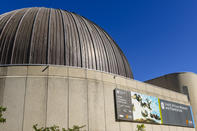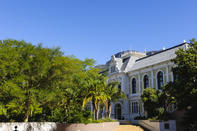The Iziko Museum
Founded in 1825, the South African Museum is the oldest museum in sub-Saharan Africa. The planetarium is adjacent to the main museum building and charges a separate admission fee. All the museums in Cape Town are run under the auspices of the Iziko Organisation. Iziko is the Xhosa word for ‘hearth’, a place where people traditionally gather around the warm fire to share stories.

However, as is the case with many other old institutions, Iziko has its hands full, trying to pull the South African Museum out of the old Nationalist mode of educational discourse and into the new way of thinking. As a result of this on-going modernisation, the museum is a bit of a mixed bag. Highlights are the newly refurbished exhibit on the Bushmen and the eerie Lydenberg Heads, a fascinating relic of a little-known tribal culture. The other cultural exhibits are still very old fashioned, but are bolstered by extensive displays of implements and traditional costumes.
Natural History

There are also many halls filled with melancholy rows of stuffed animals displayed in dusty glass boxes, their glassy eyes eternally staring out at the passers-by. These are the Natural History displays, and there doesn’t seem to be a single creature on the sub-continent that was not killed and mounted by the zealous curators of the museum.
Dozens of animal skeletons, an extensive fossil collection, a coelacanth and a quagga foal in formaldehyde are also on display. The highlight of the museum, however, is unquestionably the Whale Well. This vast, airy atrium in the centre of the building houses several whale skeletons, suspended dreamily from the roof as if swimming in a huge tank of invisible water.
The size and beauty of these creatures is greatly appreciated, as you walk slowly along the ascending ramps to view their mammoth intricacy. With the soft sounds of whale song in the background and the awesome scale of the largest mammal on Earth overhead, the Whale Well alone is worth the price of admission.
By David Fleminger